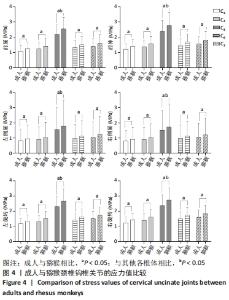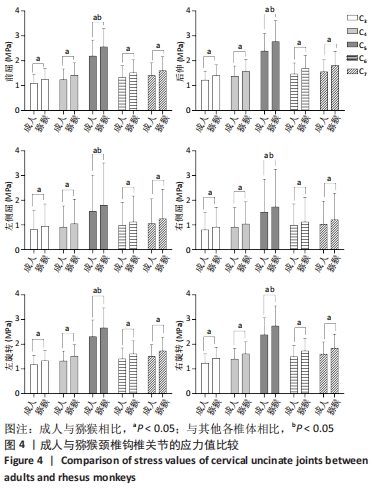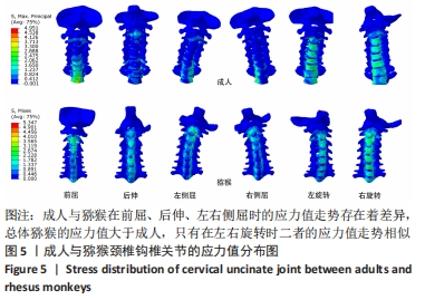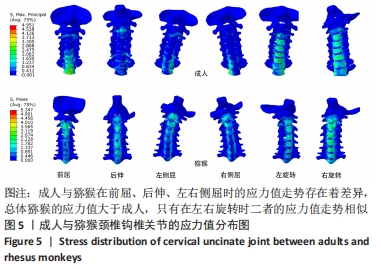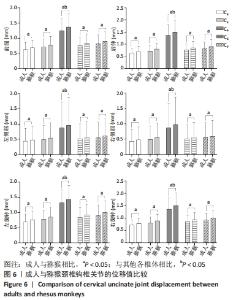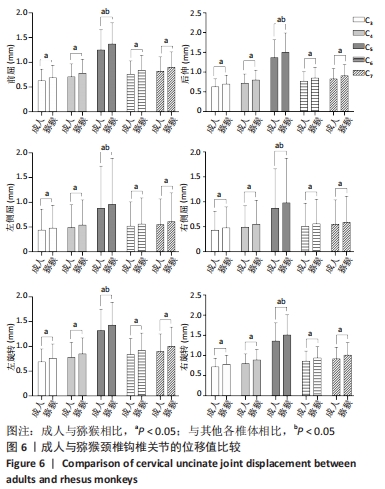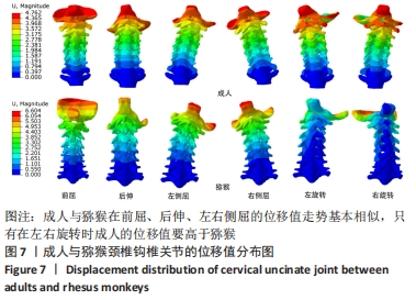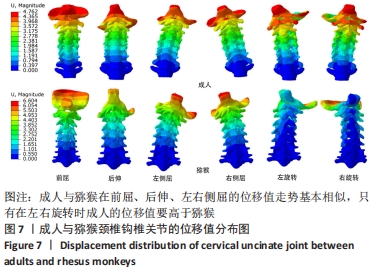[1] MEYER MR, WOODWARD C, TIMS A, et al. Neck function in early hominins and suspensory primates: Insights from the uncinate process. Am J Phys Anthropol. 2018;166(3):613-637.
[2] ARORA T, ZHANG L, PRASAD P. Development of a Subhuman Primate Brain Finite Element Model to Investigate Brain Injury Thresholds Induced by Head Rotation. Stapp Car Crash J. 2019;63:65-82.
[3] BENTON R. The baboon in medical research. Austin: University of Texas Press. 1967:101-215.
[4] OLSZKO AV, BELTRAN CM, VASQUEZ KB, et al. Initial analysis of archived non-human primate frontal and rear impact data from the biodynamics data resource. Traffic Inj Prev. 2018;19(sup1):S44-S49.
[5] WANG XD, FENG MS, HU YC. Establishment and Finite Element Analysis of a Three-dimensional Dynamic Model of Upper Cervical Spine Instability. Orthop Surg. 2019;11(3):500-509.
[6] TOMINAGA T, DICKMAN CA, SONNTAG VK, et al. Comparative anatomy of the baboon and the human cervical spine. Spine (Phila Pa 1976). 1995;20(2):131-137.
[7] DICKMAN CA, CRAWFORD NR, TOMINAGA T, et al. Morphology and kinematics of the baboon upper cervical spine. A model of the atlantoaxial complex. Spine (Phila Pa 1976). 1994;19(22):2518-2523.
[8] 吴天秀, 廖进民, 李文德, 等. 猕猴长骨及椎骨的力学性能[J]. 中国组织工程研究与临床康复,2009,13(46):9027-9031.
[9] 刘伟聪, 陈雄生, 周盛源, 等. 正常人体C0-T1全颈椎有限元模型的构建及意义[J]. 中国组织工程研究,2018,22(11):1707-1712.
[10] 黄师, 侯铁胜, 赵鑫, 等. 山羊颈椎能成为人类颈椎的良好模型吗[J]. 中国临床解剖学杂志,2008,26(3):329-331.
[11] 盛孙仁, 徐华梓, 王向阳, 等. 猪、小牛与人颈椎的生物力学比较[J]. 医用生物力学,2010,25(5):380-384.
[12] 董军, 梁宝宝, 黄思华, 等. 山羊颈椎次全切除减压非融合后生物力学特性[J]. 脊柱外科杂志,2021,19(4):247-252.
[13] 凌泽莎. 猕猴椎动脉及横突孔大水的CTA观察及其CSA模型的可行性研究[D].重庆:重庆医科大学,2014.
[14] 凌泽莎, 周志明, 郑晓, 等. 实验用猕猴颈部骨骼和血管的影像学及血流动力学分析[J]. 中国实验动物学报,2015,23(5):500-505.
[15] 邵荣学, 全仁夫, 王拓, 等. 新型梯度复合HA/ZrO_2组织工程骨支架在猕猴颈椎融合中的应用[J]. 中华解剖与临床杂志,2017,22(6): 499-509.
[16] JUNHAO L, ZHOU Y, XIUHUA W, et al. Comparison of the anatomical morphology of cervical vertebrae between humans and macaques: related to a spinal cord injury model. Exp Anim. 2021;70(1):108-118.
[17] 范春梅, 李志雄, 周建华. 实验猕猴头颈部CT影像学观察[J]. 畜禽业,2012(4):30-32.
[18] DEVRIES WATSON NA, GANDHI AA, FREDERICKS DC, et al. Sheep cervical spine biomechanics: a finite element study. Iowa Orthop J. 2014;34:137-143.
[19] 娄纪刚, 刘浩, 武文杰, 等. 新型人工颈椎间盘山羊模型的建立及其研究[J]. 实用骨科杂志,2017,23(5):426-429.
[20] WANG L, WANG Y, SHI L, et al. Can the sheep model fully represent the human model for the functional evaluation of cervical interbody fusion cages. Biomech Model Mechanobiol. 2019;18(3):607-616.
[21] 汤泽瀚. 新型3D打印颈椎椎间融合器的研制及动物实验初步研究[D]. 上海:中国人民解放军海军军医大学,2019.
[22] SPARREY CJ, SALEGIO EA, CAMISA W, et al. Mechanical Design and Analysis of a Unilateral Cervical Spinal Cord Contusion Injury Model in Non-Human Primates. J Neurotrauma. 2016;33(12):1136-1149.
[23] LEE JH, PARK WM, KIM YH, et al. A Biomechanical Analysis of an Artificial Disc With a Shock-absorbing Core Property by Using Whole-cervical Spine Finite Element Analysis. Spine (Phila Pa 1976). 2016; 41(15):E893-E901.
[24] 薄雪峰, 陈赞, 王辉, 等. 部分钩突切除对颈椎稳定性影响的有限元分析[J]. 北京生物医学工程,2015,34(5):447-453.
[25] CLAUSEN JD, GOEL VK, TRAYNELIS VC, et al. Uncinate processes and Luschka joints influence the biomechanics of the cervical spine: quantification using a finite element model of the C5-C6 segment. J Orthop Res. 1997;15(3):342-347.
[26] 刘浩, 杨毅, 陈林, 等. 钩椎关节融合器山羊实验模型的建立及初步研究[J]. 实用骨科杂志,2019,25(9):808-811.
[27] 王星, 徐雪彬, 张少杰, 等. 成年猕猴C0-T1全颈椎有限元模型的建立及有效性验证[J]. 中国组织工程研究,2021,25(35):5632-5637.
[28] 肖莉, 杨红, 石清明, 等. 藏酋猴脊柱的解剖学研究[J]. 西南国防医药,2017,27(10):1037-1040.
|
